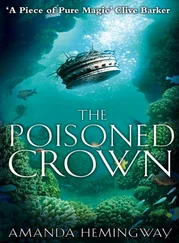Solhaug was a safe place for children, at any rate as long as you did not let the bigger lads trick you into lighting a bonfire in the tinder-dry grass on the edge of the woods, did not climb to the top of the majestic fir tree at Kvernstua and did not try to show off to the girls by teetering recklessly on the edge of the sheer drop at Egiltomta. As always, though, there was a serpent in paradise, and in this case it was actually snakelike in form: the sharp bend on Bergensveien.
For the mothers of Solhaug, Bergensveien was the real big bogey. ‘Don’t you go biking down Bergensveien’ was a refrain that all of the kids had to listen to ten times a day. Not without good reason, since in those days a constant stream of traffic, heavy traffic that is, used to rumble along Bergensveien, a relatively narrow road, on the way to and from the new stamp-mill at the top of Hukenveien. The mothers had staged a number of actions, when they had sat with their coffee and cake on the balcony closest to Bergensveien and, in-between the latest gossip about Five-Times Nilsen and Tango-Thorvaldsen and the useless new assistant down at the corner shop, counted the appalling number of trucks that thundered past in the course of a day. They then sent their findings, as both a complaint and plea to God only knows what office, and never heard a word in reply. There was no alternative, either, apart from closing the stampmill, so they just had to go on singing their refrain: ‘I’m telling you Petter, if I ever catch you on your bike out on Bergensveien, I’ll leather your backside so hard it’ll be weeks before you can sit on a bike again!’ I should perhaps add that this was in the days before smacking children was forbidden in Norway.
So much for the mothers’ point of view. The kids, the boys in particular, loved the trucks, introducing as they did an element of excitement into an otherwise pedestrian life, beaten only by the lavvy-lorry, a rat-coloured monster that rolled up every now and again to empty the outside toilet at the kindergarten, or one of the intermittent army convoys that would crawl along Trondheimsveien, with tanks towed on such objects of wonder as low-bed semi-trailers and everything. The trucks on Bergensveien may have been dangerous, but they were also camels passing through their day-to-day existence, laden not with gravel but with gold. Jonas and Nefertiti often sat at the roadside, marvelling at these great beasts, the ground shaking underneath them, and if they were lucky, they might even catch the sound of a spine-chilling ‘fart’ of compressed air as the driver released the brakes. For the most part they were Bedfords or Volvos, but there was nothing to compare with the Scania-Vabis trucks, the very name sounded like an adventure story, an epic such as Quo Vadis , or a prehistoric monster, a bit like Tyrannosaurus Rex . They dreamed of being given a ride in one, especially one of those with a fat little Michelin man fixed to the roof of the cab, the sort you could even get as a jigsaw puzzle, complete with indicator rods with knobs on the ends, jutting out like sceptres on either side of the bumper, and cardboard pictures of lightly-clad ladies stuck to the radiator, much the way vehicles in India are hung about with the most garish holy images.
But, as I say, there was one flaw. The bend. The bend in Bergensveien that ended right at the point where the safe road from Solhaug opened onto the main road, where paradise ran out, and market forces, as it were, took over, and you had to check the road twice and even three times, or rather, look up the road, towards the void ten metres farther up that marked the exit from the sharp bend and listen, too, like Red Indians putting their ears to the ground to catch the sound of buffalo, because the rise of the knoll completely blocked the view of any oncoming traffic — although that suited the kids just fine when it came to stretching fine lengths of string across the road on dark autumn evenings, almost killing more than one driver who slammed on the brakes at sight of this sudden obstacle, taking it, in the glare of the headlights, for a wire. When you came to this crossroads you just had to go for it, freewheeling — strictly forbidden, of course, but so gloriously thrilling — out onto the carriageway and down the hill to the kiosk and the sweet counter. The standard initiation rite for the lads of Solhaug was not, as in some rural communities in Europe, to lie down flat between the railway lines and stay there while a train ran over you — it involved taking both hands off the bars on Bergensveien, preferably with a Volvo truck thundering up behind you and a monstrous Scania-Vabis coming straight at you and not blinking an eye or turning a hair as both big beasts ‘farted’, eased up on the brakes and passed by.
Nonetheless, Jonas would spend his whole life wondering what Nefertiti was doing on Bergensveien on Midsummer’s Eve of all evenings, when absolutely no one would have thought of taking their bike out; and, even more to the point, what in heaven’s name a Scania-Vabis truck, one of the biggest models at that, should have been doing there at that time of day, so totally off course, like a rogue elephant, a murderous stray, a polar bear in Greenland in July.
Jonas Wergeland was ten years old, and Midsummer’s Eve was about to be celebrated by a representative slice of Norwegian society, sixty families all told, including, that is — as if to indicate the fringes of the nuclear family — one childless couple, one peevish elderly widow and a dreamy bachelor with a windowsill covered in models of jetfighters. Midsummer’s Eve at Solhaug was something quite unique, to be sure, but not, as Jonas Wergeland and the other residents would imagine, looking back on it later with nostalgia, because the families living in those six blocks were in any way out of the ordinary; the Solhaug of those days, like most other satellite communities, presented a pretty standard cross-section of the Norwegian lower middle class — people hailing from all over the country, employed by such bodies as Standard Telefon og Kabel, the Customs Department and Nordisk Aluminium, in the capacities of ‘bookkeeper’ or ‘typist’ and the like, with a sprinkling of less common job titles: ‘averager’, for example, or, most mysterious of all, ‘traveller’. Now and again the list might also include a dentist or an engineer, the odd lawyer or teacher.
What was special, of course, were the times. Most of these families had moved in just as the post-war rebuilding of Norway was completed, and the amazing process of economic growth was about to begin; years when almost everyone slowly, but surely began to find themselves better off, in material terms at least, a fact illustrated by a peek into these flats: three rooms and kitchen, already packed with all sorts of modern aids, including such items as Elektra cookers with thinking hotplates, plastic sliding doors and ornate radiograms, those battleships of living-room furnishing, while the most trend-conscious already had Formica-topped tables and wallpaper patterned with fruit in their kitchens and Danish designer Bo Bøgesen’s teak monkeys swinging from their lamp cables. There was only one way to go and that was up, and most important of all, everyone had a job to go to, there was no unemployment; even the political parties were in agreement on most things, at any rate on the home front, which meant that all of them, even the Conservatives, were really social democrats. Those were the days when the Norwegian Labour Party, the socialist DNA, equalled the scientific DNA, when politics and life went hand in hand, when socialism and democracy were as harmoniously entwined as the double helix of the DNA molecule.
Читать дальше












